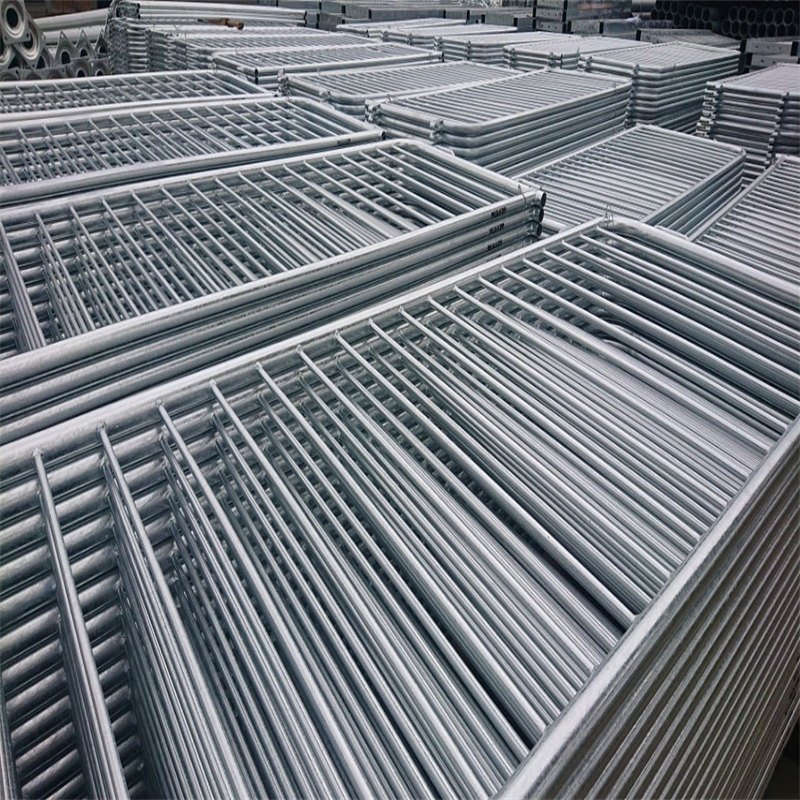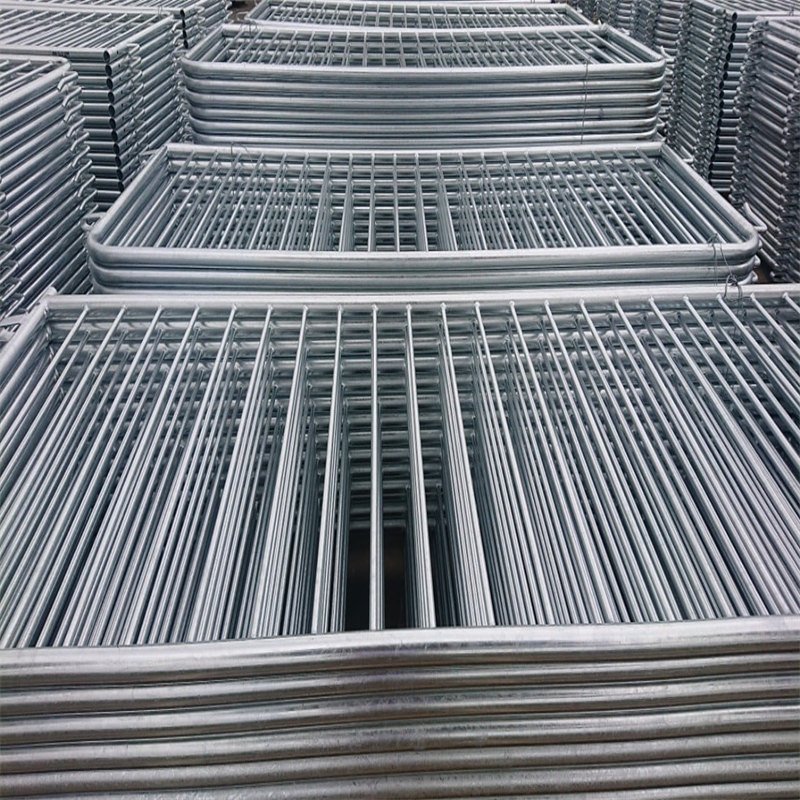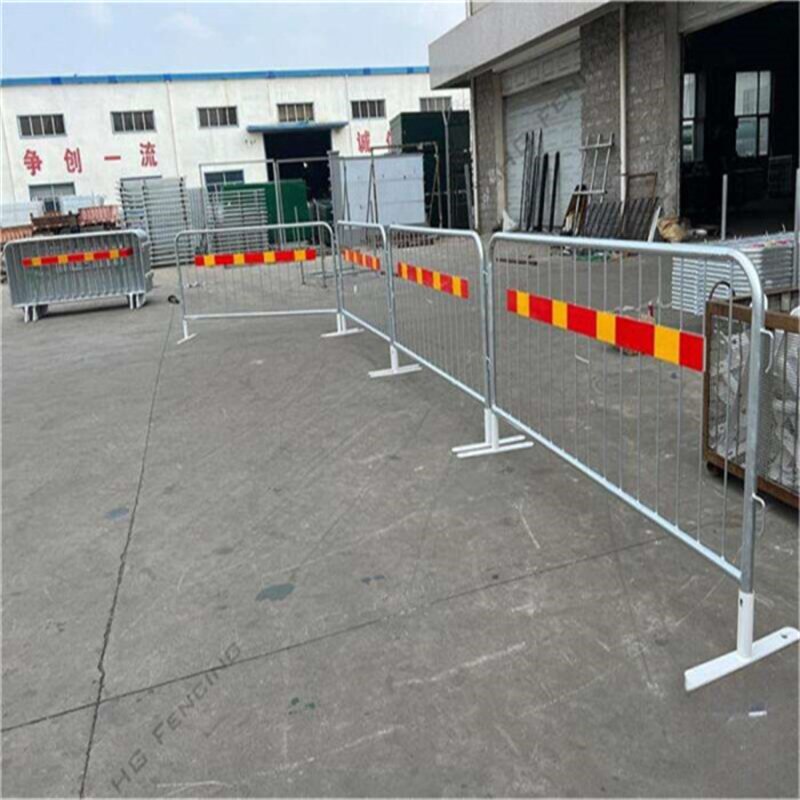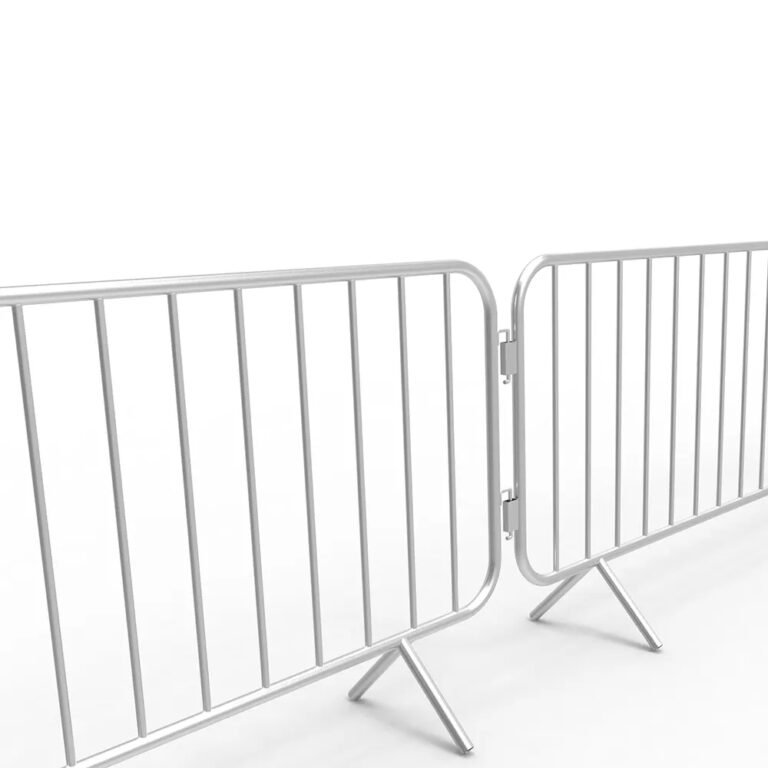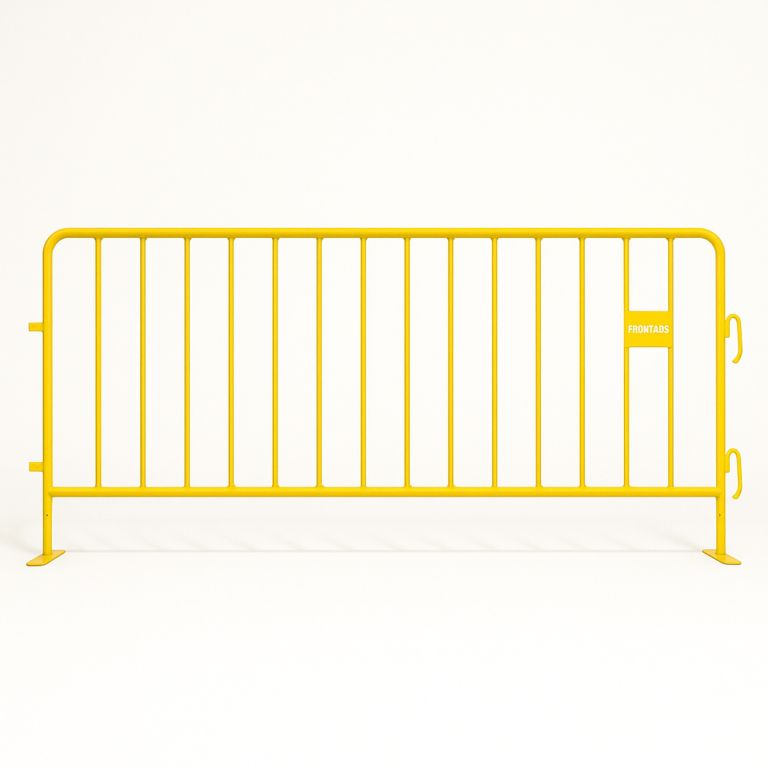Indoor Crowd Control Barriers: Ensuring Safety and Order
- 20GP Container Loading: 370 kits
- 40HC Container Loading: 970 kits
- Price: 14.05$ - 29.50$ per kit
- Frame Tube: 25mm, 32mm, 38mm, 50mm, etc.
- Surface: Galvanized, Powder Coating
- Color: Red, Green, Silver, Custom All RAL Colors
- Trademark: BMP
- HS Code: 73144900
- Feet Option: Flat steel & Bridge-style feet
- Payment Term: TT 30% deposit, balance 70% upon viewing finished product photos
- MOQ: 280 kits
- Treatment: Pre-galvanized, Hot-dip galvanized, Polyester powder coated
- Packing: Metal stillage wrapped in plastic film
- Ocean Shipping Time: 15 days - 30 days
- Production Time: 15 days - 35 days for 5000 kits
- Destination Port: Brisbane, Sydney, Melbourne, Fremantle, Darwin
- Description
Indoor crowd control barriers play a crucial role in managing crowds, ensuring safety, and maintaining order at events or public spaces. These barriers are essential for guiding people, controlling queues, and sectioning off areas in a structured way. Durable materials like galvanized steel or stainless steel make these barriers effective and reliable. They are widely used in airports, train stations, sports arenas, shopping malls, conference halls, and museums.
 |
 |
 |
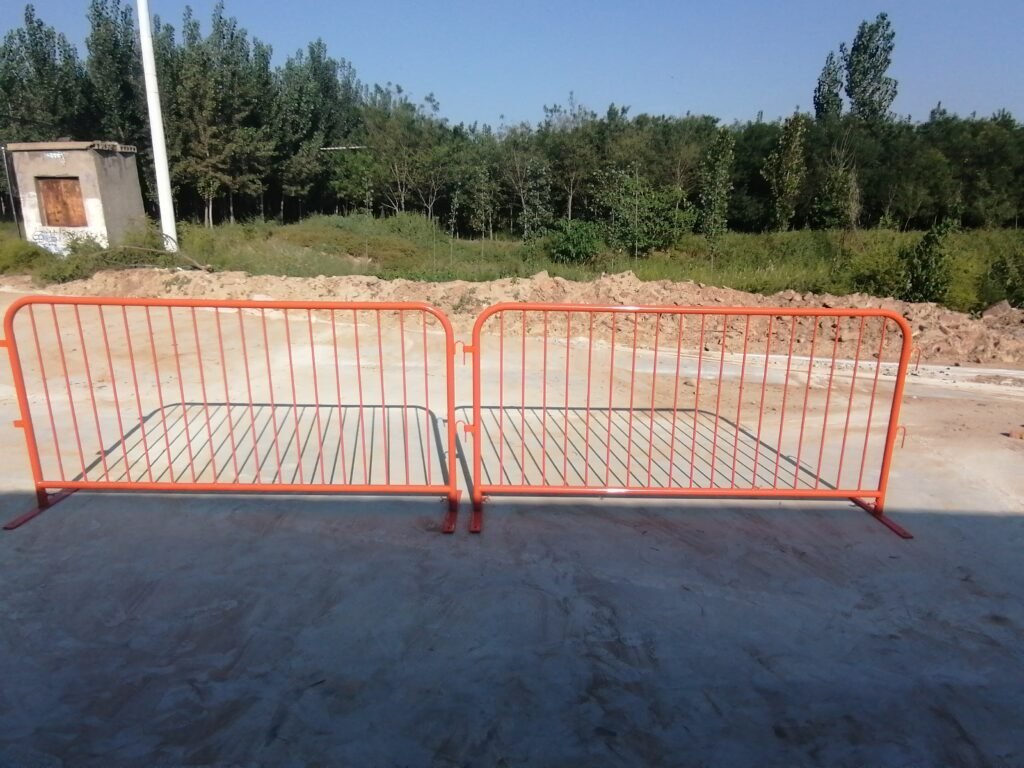 |
Indoor Crowd Control Barriers Specifications
| Product | Dimensions (W x H x D) | Gauge Pipe / Wall | Weight (kg) | Material | Color / Finish |
|---|---|---|---|---|---|
| Steel Crowd Control Barrier | 2100mm x 1100mm x 32mm | 25mm OD / 1.4mm | 9.6 | Hot dipped galvanized steel (42 microns) | Galvanized / Powder Coated (Custom Color Available) |
| Yellow Crowd Control Barrier | 2100mm x 1100mm x 32mm | 25mm OD / 1.4mm | 9 | Black steel with powder coating | Yellow |
| Yellow Crowd Control Barrier Foot | 60mm x 130mm x 600mm | 32mm OD / 2mm | 1.6 | Black steel with powder coating | Yellow |
| Crowd Control Barrier Gate | 1200mm x 2100mm (OD: 25mm) | 25mm OD / 1.4mm | 12 | Hot dipped galvanized steel (42 microns) | Galvanized / Custom Powder Coated |
| Yellow Crowd Control Barrier Gate | 1200mm x 2100mm (OD: 25mm) | 25mm OD / 1.4mm | 12 | Black steel with powder coating | Yellow |
Key Features of Indoor Crowd Control Barriers
1. Material
Indoor barriers are often made from galvanized steel or stainless steel, ensuring strength and resistance to wear, without the risk of corrosion from exposure to indoor conditions. This material selection guarantees long-term use, easy maintenance, and a polished appearance suitable for indoor environments.
2. Design and Structure
- Interlocking System: Many barriers feature hooks or connectors that allow easy linking to create continuous sections.
- Flat Feet Design: Indoor barriers use flat, detachable steel bases to prevent tripping hazards and protect flooring. This design also allows for quick assembly and removal.
- Lightweight yet Durable: Though sturdy, indoor barriers are lighter than their outdoor counterparts, making them easier to move and store.
3. Dimensions
- Height: Typically 1000mm – 1200mm.
- Width: 2000mm – 2500mm.
- Tubing: Frame tubes range from 25mm to 32mm in diameter, ensuring rigidity and impact resistance.
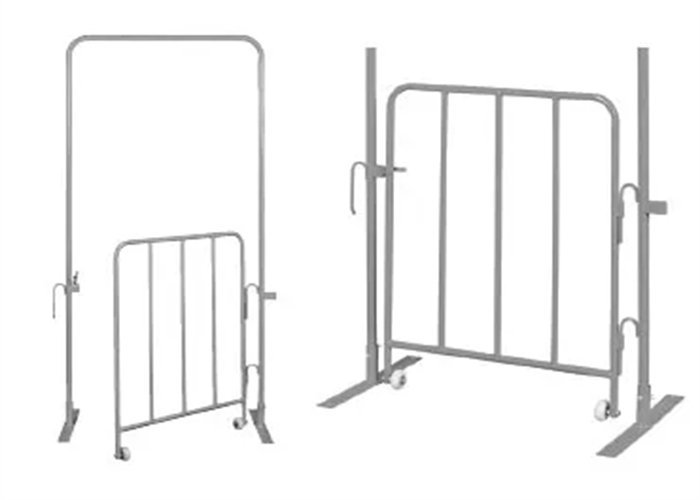 |
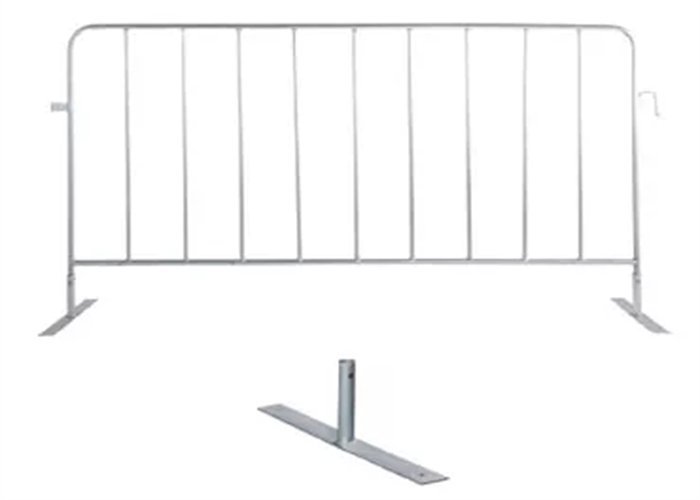 |
 |
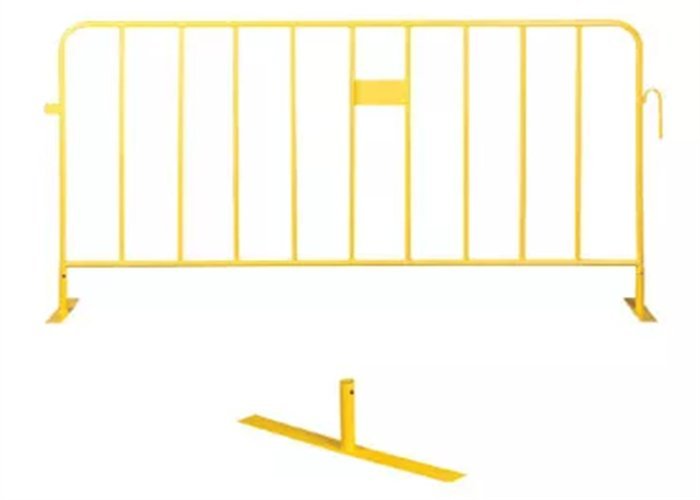 |
Applications of Indoor Crowd Control Barriers
1. Airports and Train Stations
Indoor barriers organize queues for security checks, ticket counters, and boarding gates. They ensure smooth passenger flow and prevent overcrowding.
2. Sports Arenas and Concert Venues
Barriers help manage entrances and exits, control access to VIP areas, and separate crowds to maintain safety during events.
3. Conference Halls and Exhibition Centers
Used to guide attendees through registration, manage breakout room access, and section off restricted areas, enhancing event efficiency.
4. Museums and Galleries
Barriers are ideal for restricting access to certain exhibits or areas, maintaining order and protecting valuable displays from close contact.
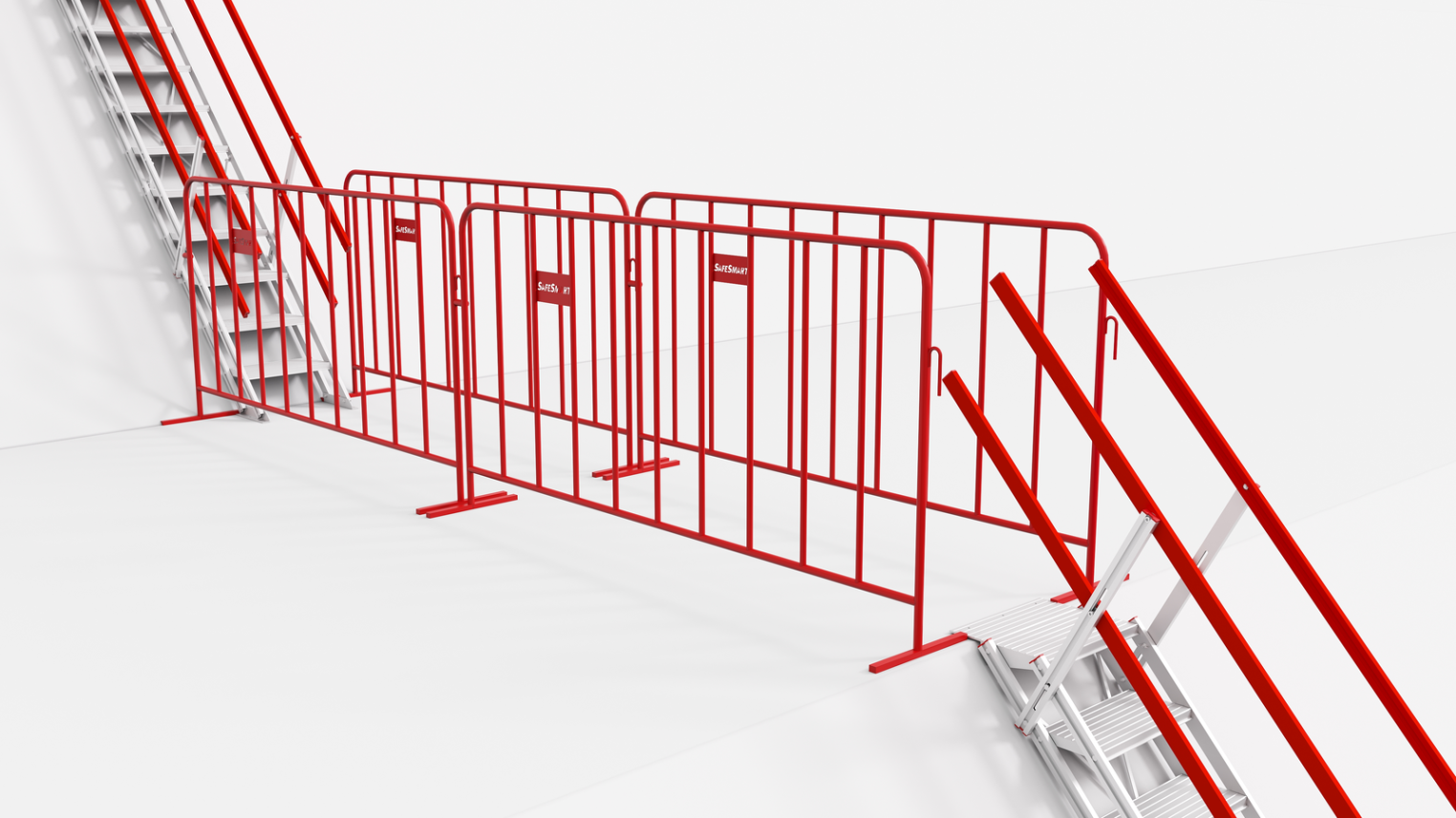
Advantages of Indoor Crowd Control Barriers
1. Durability and Stability
The use of steel ensures these barriers can withstand frequent use and accidental impacts. The galvanized or stainless finish prevents rusting, even with continuous indoor use.
2. Aesthetic Appearance
Indoor settings demand barriers that are not only functional but also visually appealing. The polished finish of steel barriers complements modern interiors.
3. Easy Setup and Portability
These barriers are designed for quick assembly, with detachable bases and lightweight frames that make storage and relocation convenient.
4. Safety-Oriented Design
The flat feet reduce trip hazards and protect flooring, making them safer for high-traffic indoor areas. Rounded edges on the frame prevent injuries during setup and use.
Comparison with Outdoor Barriers
While both indoor and outdoor crowd control barriers share structural similarities, indoor barriers focus more on aesthetics and portability. Outdoor barriers are typically heavier, with larger bases to withstand wind or uneven surfaces, while indoor barriers emphasize easy handling and smooth finishes for polished interiors.
Conclusion
Indoor crowd control barriers provide a crucial solution for managing people and maintaining order across various indoor spaces. Made from galvanized or stainless steel, these barriers offer durability, portability, and a clean appearance, ensuring they blend seamlessly into any indoor environment. Whether for airports, sports arenas, or exhibition halls, these barriers guarantee safety, efficiency, and an enhanced user experience. When selecting barriers, the emphasis should be on ease of use, stability, and aesthetic appeal to meet the unique needs of indoor spaces.
Crowd Control Barriers
